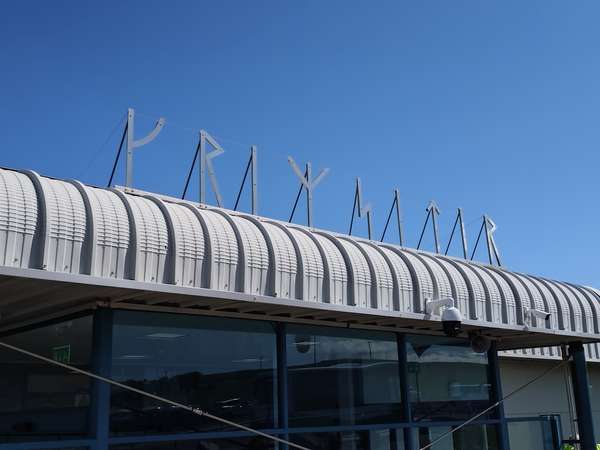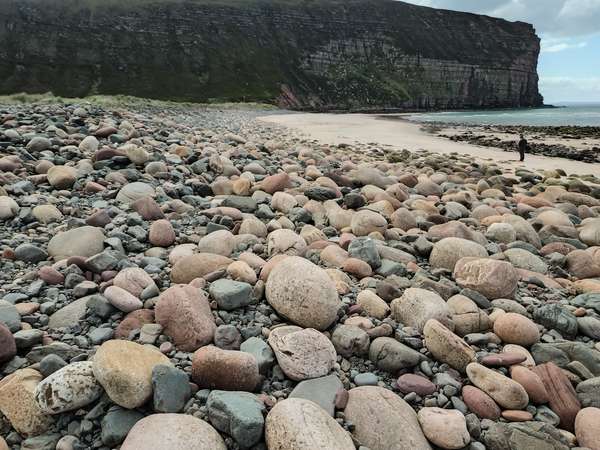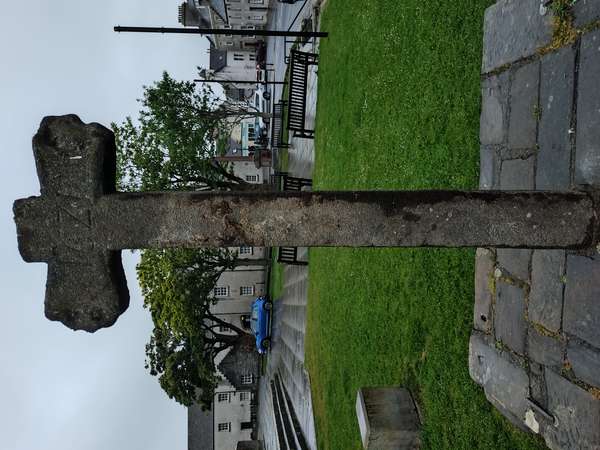This travelogue is only partly about cycling, but hopefully you will find it interesting. First the long drive up and back, but with stops as part of our ongoing quest to visit the open-air swimming pools described in Emma Pusill and Janet Wilkinson’s wonderful book The Lido Guide:

The lido at Gourock was splendid: perched on the edge of the Firth of Clyde with views of the Trossachs, salt water and heated to 29 C (oh bliss). Those at Shap, Hunsonby and Ilkley were ‘refreshing’ (typically 16 C). The Trinkie just south of Wick was a sea-pool (concrete walls retaining the tide) rather than a true lido, but it had been damaged by Storm Babet in October 2023, so only a brief slippery paddle among the seaweed.
So, onward to Orkney Mainland by the Scrabster-Stromness ferry, and to Kirkwall. The second purpose of this trip was to go to some of the Orkney Folk Festival with acts from around the world performing across the islands between 22 and 25 May: https://orkneyfolkfestival.com/. We had done well to arrange accommodation well in advance, as everywhere was fully booked – several musicians were camping in tents on Market Green in Stromness. The main opening and closing concerts had sold out within minutes of going on sale, but we went to events in Tankerness, Stromness Parish Church and the Pickaquoy Centre. Particularly superb was the folk band Frigg from Finland. Don’t miss them if they perform anywhere nearby: https://frigg.fi/en.
And to the cycling. I had known that the islands are not particularly mountainous, with rolling farmland and few trees. Slightly unusual conditions as well: wind from the north but not cold. It wasn’t as windy as it can be, but I still found myself buffeted and riding leaning to compensate.
Ride 1: Southwards from Kirkwall, past the small airport with its name “Krimsitir” (Grimsetter) in runes above the small terminal building. Onward to the WW2 Italian Chapel, and continuing to Olad summit (119 metres elevation) with its view across Pentland Firth to Caithness – the plaque emphasising that it is closer to Bergen (316 miles) than London (520 miles).

Ride 2: Westward this time, stopping briefly at the Stones of Stenness then into Stromness ready to cross to Moaness on the Isle of Hoy, the small passenger ferry (MV Graemsay) bucking vigorously as it crossed the wake of the larger incoming Northlink ferry Hamnavoe. Continuing westwards on Hoy to the remote village of Rackwick, its crofters’ cottages scattered in the shelter of Moor Pea, and the small beach edged with giant pebbles. The most remote of these cottages, Dunnertoon, was the home of composer Sir Peter Maxwell Davies from 1971 until 1999: https://hoyheritage.co.uk/portfolio/sir-peter-maxwell-davies/. Back to the east side of the island, and south before taking the small car ferry (MV Hoy Head) from Lyness to Houton – perishingly cold when perched on the high-level open side deck while crossing Scapa Flow.

Ride 3: Northwards this time, and still a slog with the wind shifting more towards the west. I was grateful to find the Birsay tea rooms (open Thursday to Monday only), before visiting the ruins of the Earl of Birsay’s palace. Partly wind-assisted ride back around the east of Mainland, and past one of the vast cruise ships that stop in Inganess Bay; this one I think was the Fantasia-class MSC Preziosa (capacity for 4,345 passengers) that had travelled from Akureyri in Iceland and was due to sail on to Hamburg. I enjoyed using the MarineTraffic app to see what ships where in harbour.
One final memory: while walking along Albert Street in Kirkwall, we were surprised by tooting of the horn of a van as it passed with several young women smiling in the open back, one of whom wore pyjamas covered in molasses. A resident explained that this was a “blackening,” the rural Scottish wedding custom where the “captured” bride-to-be is decorated and paraded publicly – see Wikipedia. We later saw the laughing intended bride being tied to the Mercat (or market) cross with clingfilm. Fortunately, this is a replica of the 1621 cross; the original is now inside St Magnus cathedral.




